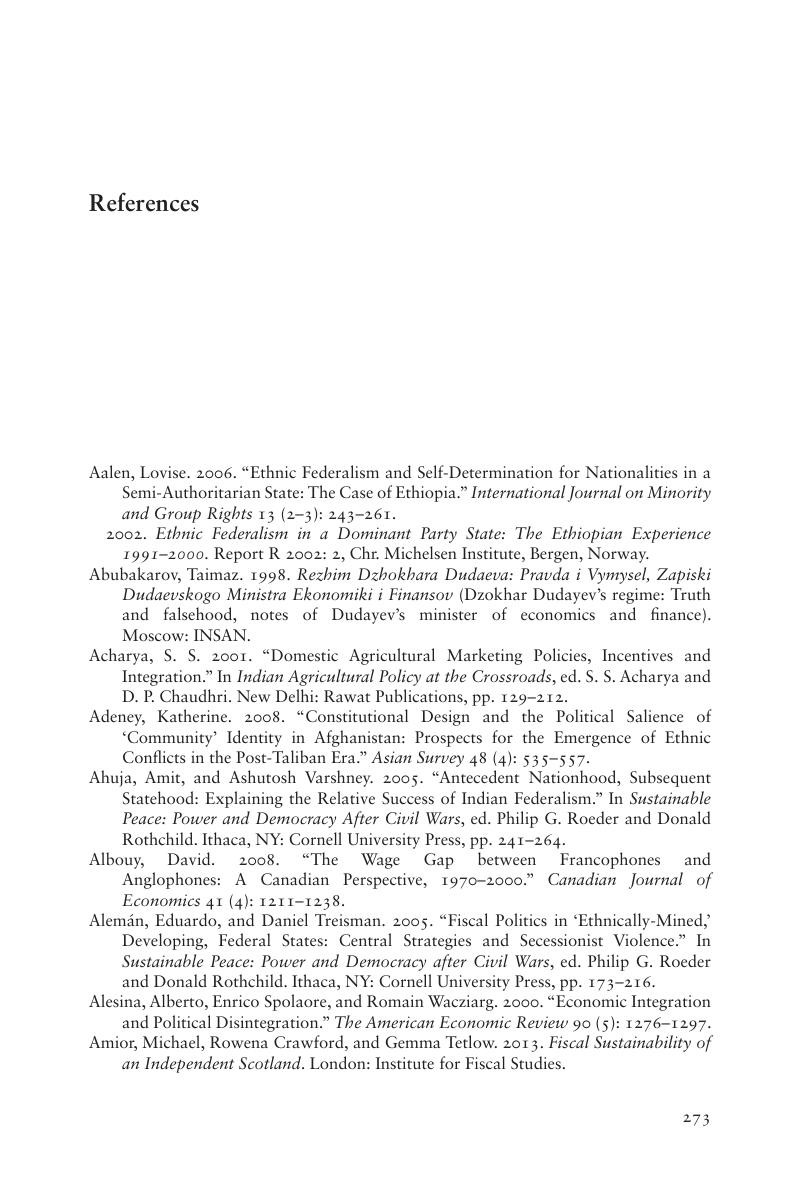Book contents
- Decentralization and Intrastate Struggles
- Decentralization and Intrastate Struggles
- Copyright page
- Dedication
- Contents
- Figures
- Maps
- Tables
- Book part
- 1 “Peace-Preserving” Decentralization?
- 2 Divisions and Diversity in Federal States
- 3 The First War in Chechnya
- 4 The Rise and Decline of the Punjab Crisis
- 5 Québec’s Sovereignty Movement
- 6 Conclusion: Comparative Perspectives
- References
- Index
- References
References
Published online by Cambridge University Press: 05 June 2015
- Decentralization and Intrastate Struggles
- Decentralization and Intrastate Struggles
- Copyright page
- Dedication
- Contents
- Figures
- Maps
- Tables
- Book part
- 1 “Peace-Preserving” Decentralization?
- 2 Divisions and Diversity in Federal States
- 3 The First War in Chechnya
- 4 The Rise and Decline of the Punjab Crisis
- 5 Québec’s Sovereignty Movement
- 6 Conclusion: Comparative Perspectives
- References
- Index
- References
Summary

- Type
- Chapter
- Information
- Decentralization and Intrastate StrugglesChechnya, Punjab, and Québec, pp. 273 - 310Publisher: Cambridge University PressPrint publication year: 2015



